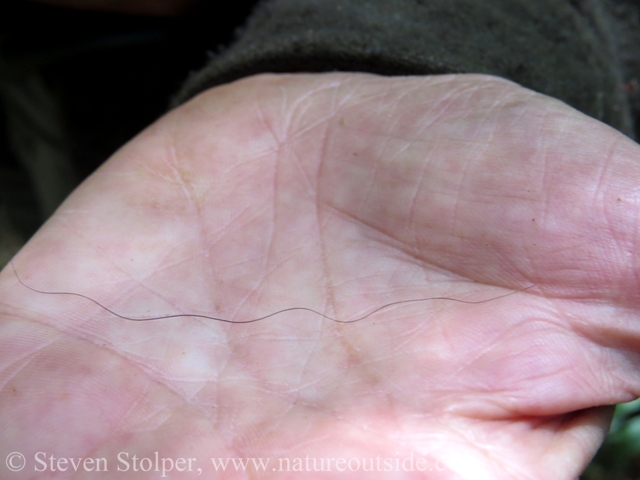
Hair from a black bear. I lifted it from a tree the bear had marked.
How cool would it be to interpret animal sign and then track the animals so you can observe them? That was my thinking when I signed up for a bear trailing class. In Part 1 we talked about the class and Black bear behavior. In Part 2 we set out to trail bears. We found feeding and marking sign and followed a bear down hillsides covered by Redwood forest. Its trail led directly toward a formidable swamp.
Getting Closer
The bear chose a small creek to make its way down the hillside. By walking in the creek bed it avoided dense brush and downed trees common in a Redwood forest. The creek cut a depression into the forest floor that provided cover for the bear to creep unnoticed toward the swamp below.
I found signs that bear regularly traveled this way. A tree beside the creek displayed old scars where passing bear had marked it with their claws. I removed a hair from the trunk where they had rubbed their scent into the bark.
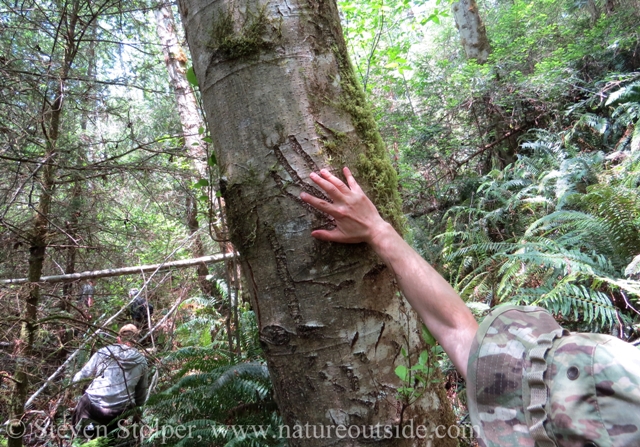
The tree is marked 9 feet above the ground.
The mud beside the creek gave us our first real view of the bear’s tracks.
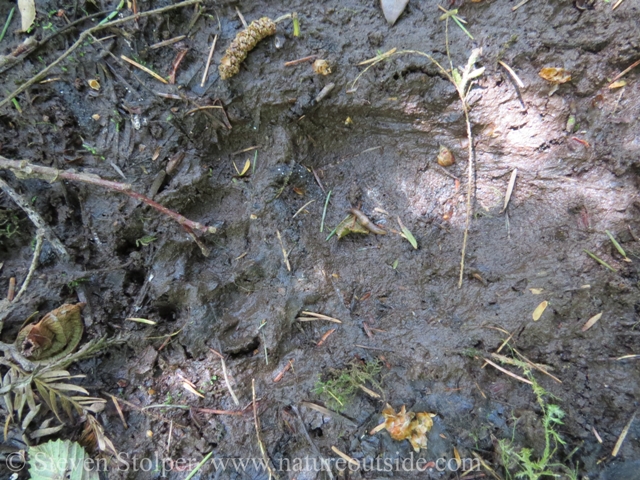
Our first well defined bear track. The animal is moving from right to left. Can you see the five toes and the elongated heel pad?
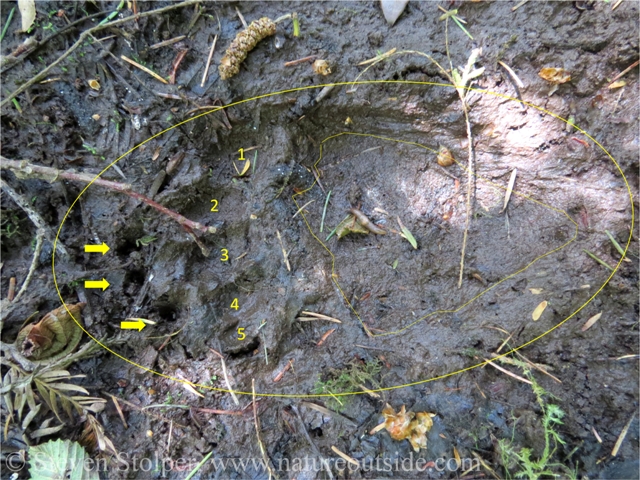
I annotated this picture to make it easier to read the track. The numbers are inside the toe marks. The arrows show where the bear’s claws register in the mud. I also outlined the heel pad.
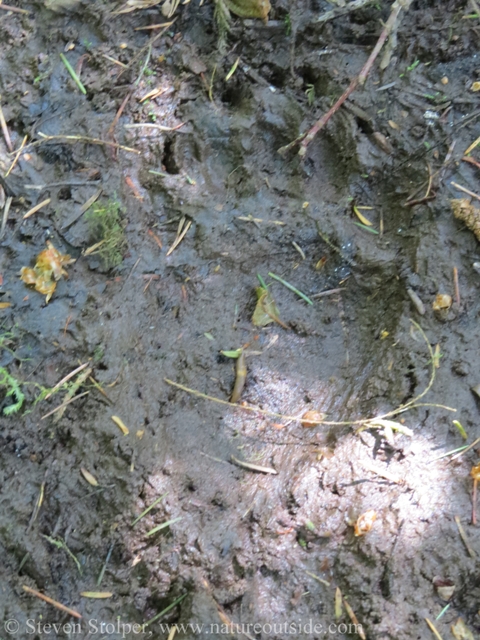
Here is the track from another angle
We finally arrive at the base of the hillside. The trees parted as the Redwood forest gave way to a giant swamp. Life had just become “interesting”…
No Visibility
The dense forest of redwood, alder, and sitka spruce disappeared. In its place, a huge expanse of skunk cabbage (Lysichiton americanus) stretched before us. Where the bear goes, we must follow… so in we went!
What are backpackers told? Don’t enter an area where you know there’s a bear. Don’t move silently, make noise. Don’t risk surprising the bear in areas of poor visibility. We were now breaking all three rules. I made sure my bear spray was handy as we crept forward.
Walking through the skunk cabbage was like wading through a muddy river up to your shoulders. You cannot see the lower half of your body. You have no idea what is lurking below the surface just feet ahead of you. Where my taller classmates may have felt uncomfortable, I felt Lilliputian.
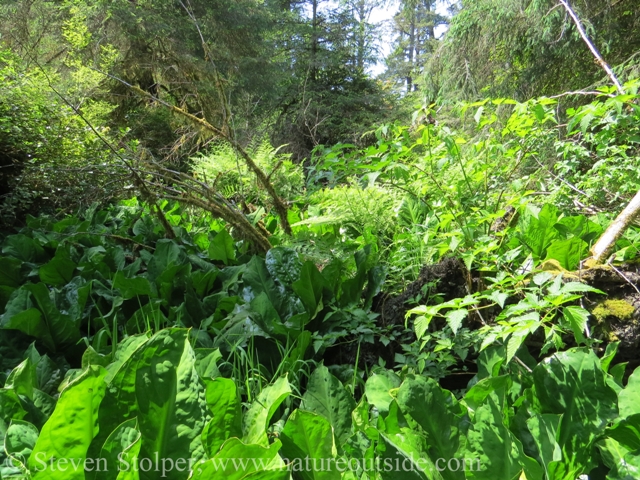
The swamp
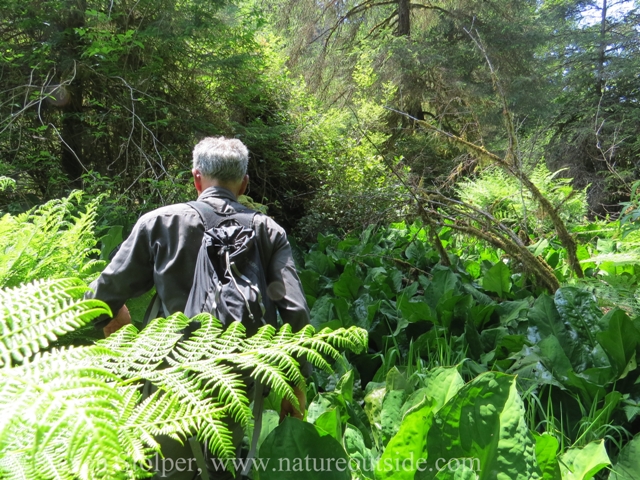
In we go…
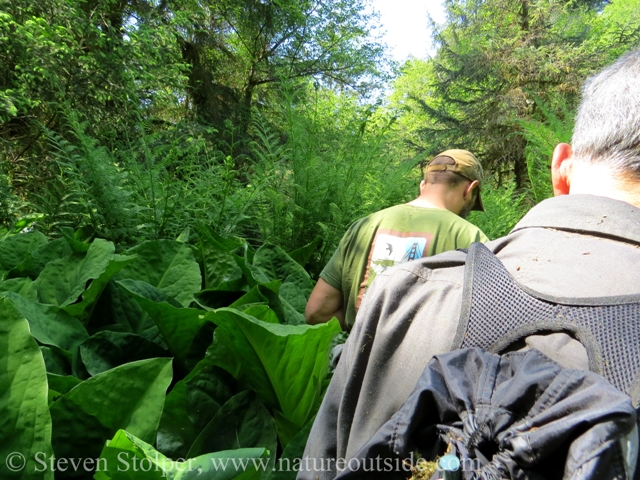
I am not very tall. Here is my perspective as we followed the bear’s trail.
We moved deliberately through the swamp as we pursued the bear’s trail. The animal moved along the edge of the water, which made sense. The ground was firmer and movement easier. But “firmer” is a relative term. We were walking in mud. When the mud was firm, the going was good. But we frequently crossed areas where we sank into the soft ground to the tops of our boot laces. This produced a distinct sucking sound as we wrenched our boots free of the muck.
The edge of the water stood inches from our feet. But the skunk cabbage concealed it from our view. In a moment of inattention, I took a step and heard a sickening splash as my left foot sank into the water. I grimaced as the cold water rushed over the top of my boot, soaking my hiking sock.
Lost and Found
As we moved forward, we parted the skunk cabbage to scan the ground below. Suddenly, the bear’s tracks disappeared! We searched for several minutes before finding the answer. The bear stepped onto a fallen tree and crossed the water into the heart of the swamp. Thankfully, we noticed bark missing from one of the fallen branches. When we smelled the bare wood, we detected the musky-sweet smell of bear. To me it smells a lot like human sweat. But it is distinctive and several times thereafter I put my nose to the ground to age tracks by their smell.
We crossed the water on the branches and suddenly found ourselves on firmer ground. Everyone relaxed as we became confident of our footing.
Bear Bed
Black bears feed during the day in areas where humans are not around. But they take many rest breaks. Bears may rest up to 50% of the time they’re awake. They often curl up right where they are feeding under berry bushes or shrubs. For longer breaks they lay down in dense wetlands or thick brush. They select sites with good outward visibility so they can monitor the approaches. Black bears often bed at the base of a large tree. The tree serves as an emergency escape route if trouble approaches.
Bears reuse good bedding sites. They often improve them by cutting foliage to serve as bedding. They may also cut plants to increase visibility along the approaches.
To my delight, we found just such a bedding site! An enormous spruce provided shade, cover, and an emergency escape.
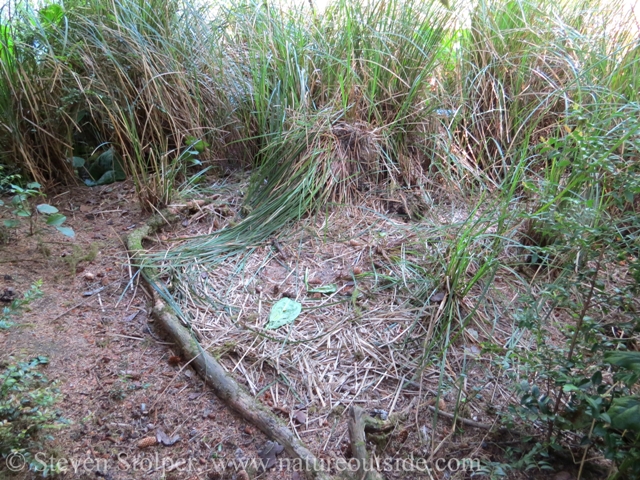
A bear’s bed! Notice the “bedding” the bear laid down.
Nearby were large piles of bear scat.
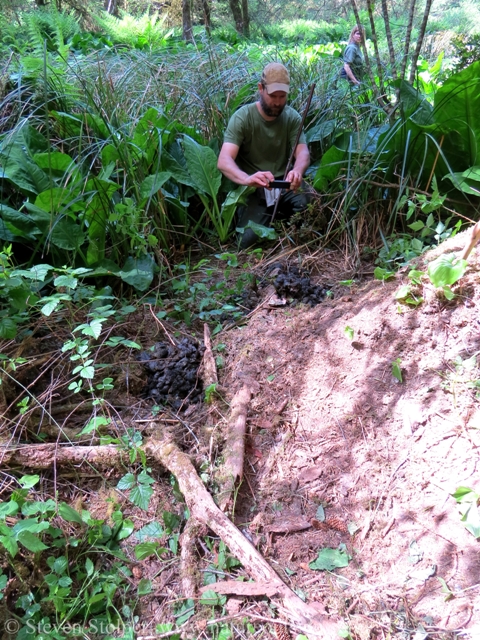
Yes, bears really do in the woods. And we have the photographic evidence!
Bear 1, Humans 0
We moved gingerly ahead. It was obvious that we were close to a bear. Recent feeding sign was all around us. The skunk cabbage stalks had been severed and devoured like giant celery.
A bear was feeding here. Notice the freshly cut stalks and scattered leaves.
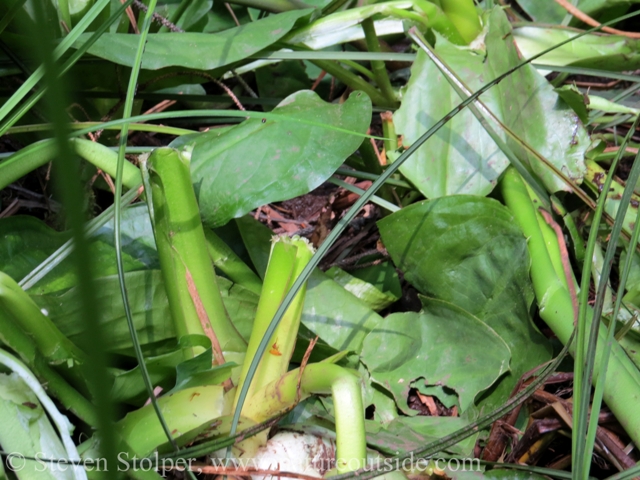
Recent feeding sign
We found bear scat so fresh that the skunk cabbage was still green after passing through the bear.
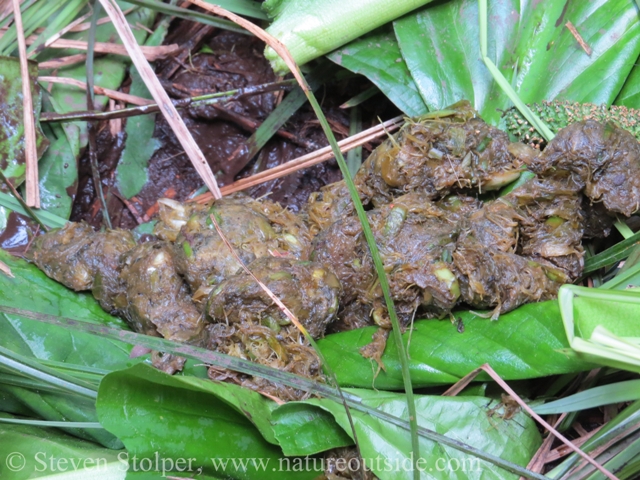
Bear stuff. The skunk cabbage is still green.
A fresh track startled us. This was a big bear! We had tracked a much smaller bear into the swamp. And the track was very fresh!
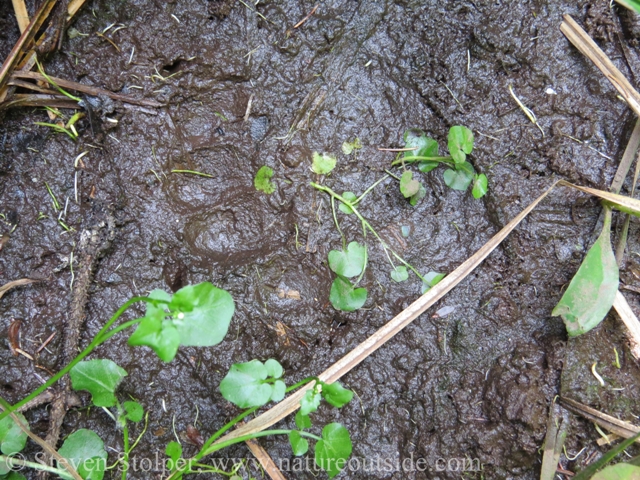
The recent track of a large bear.
But where was the bear? Could such a large animal creep away from us without a trace? We cast about in all directions, but the tracks disappeared! Baffled, we returned to our last good track and widened our search radius.
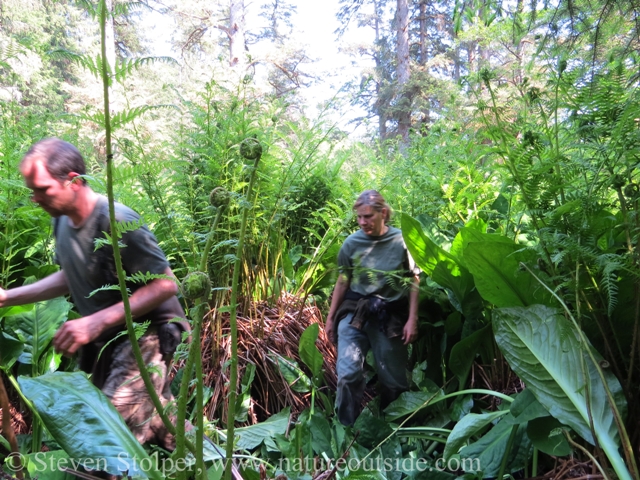
Looking for the bear
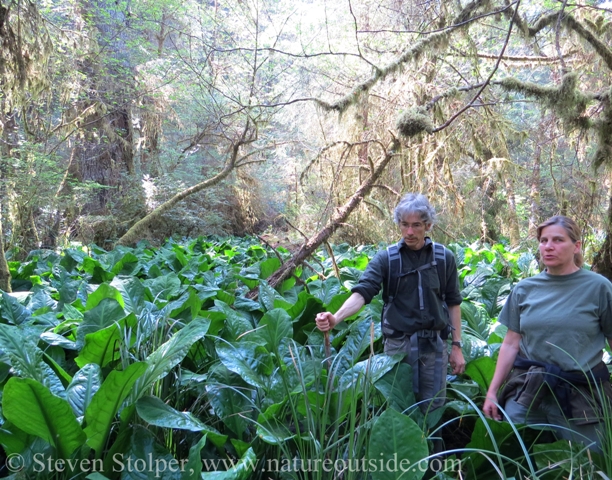
Baffled! The tracks disappear.
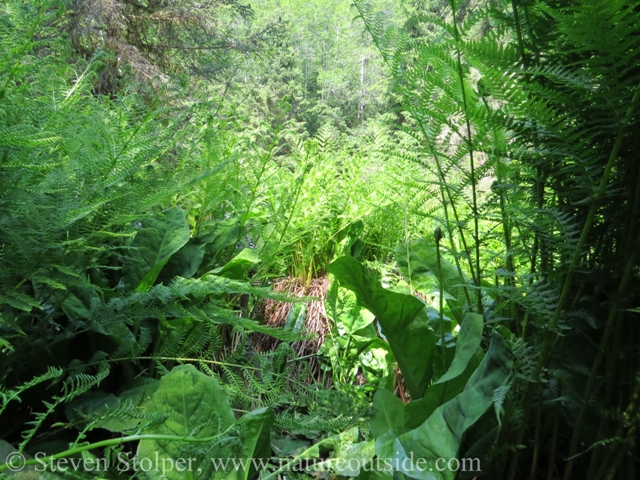
No bear to be found
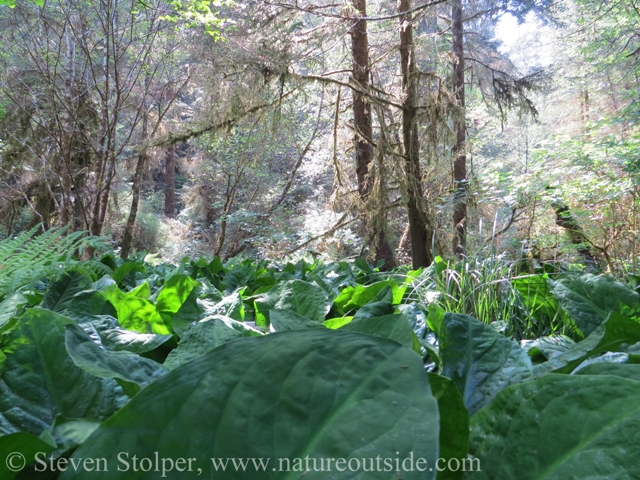
Is there a large bear hiding beneath these leaves?
The trail ran cold. An enormous bear seemed to disappear without a trace. It was getting late in the day and we had to admit defeat. It would have been foolish to blunder about without having a trail to follow. It was quite possible the bear was nearby, monitoring us. So we used the remaining sunlight to leave the swamp and return to camp.
A bear eluded us today. But tomorrow was to be a different story…
Stalking the Black Bear – High Adventure in the Forest (Part 1)
Stalking the Black Bear – High Adventure in the Forest (Part 2)
Stalking the Black Bear – High Adventure in the Forest (Part 4)
Other Tracking Articles on NatureOutside
Mountain Lion Tracks – Learn to Read Them
Mysteries on the Beach (Part 1)
Wolves Teach a Master Class (Part 1)
For fun facts and useful tips, join the free Bushcraft Newsletter.



Leave a Comment